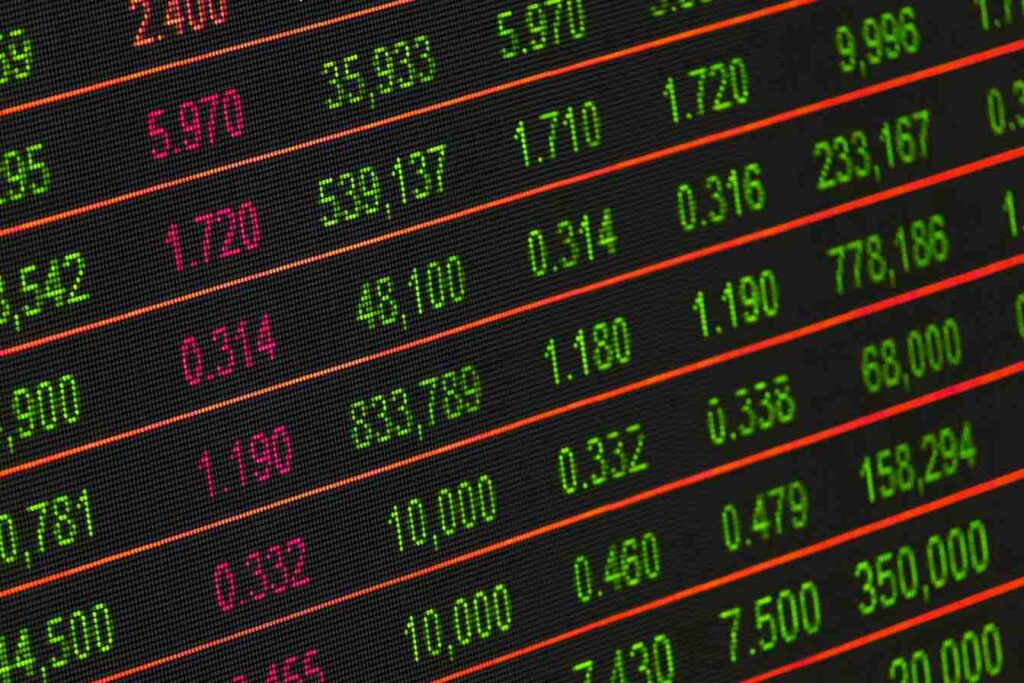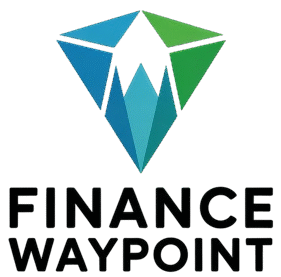The stock exchange in Brazil know as B3, plays a vital role in the country’s financial landscape. It serves as a platform for various investment opportunities, reflecting the economic pulse of Brazil and offering a gateway for both local and international investors.
Understanding how B3 operates, its complex market structure, and the various regulations that govern it can significantly help potential investors navigate this dynamic and ever-evolving environment effectively, allowing them to make informed decisions and capitalize on the diverse financial prospects available.
Key Takeaways
- B3 is the primary stock exchange in Brazil, crucial for trading various financial instruments.
- The exchange has a rich history, shaped by significant mergers that established its current structure.
- B3 operates under strict regulations enforced by CVM (Brazil’s equivalent to the SEC), ensuring fair trading practices.
- Investors on B3 can explore diverse opportunities, including equities, ETFs, and fixed income.
- Technological advancements continue to transform trading on B3, enhancing market efficiency.
Understanding B3: The Stock Exchange In Brazil
Overview of B3
Okay, so B3. What is it?
Well, it’s basically the stock exchange in Brazil. Think of it as the heart of the country’s financial market. It’s where a ton of different financial instruments get traded, from stocks to commodities to derivatives.
It’s not just some small operation either; B3 is a pretty big deal in Latin America, playing a key role in helping companies get funding and giving investors a way to diversify their portfolios. It’s a multi-market model, so it has equities, fixed income, and derivatives.
Historical Background
B3 didn’t just pop up overnight. It’s got a history, and it involves some pretty important mergers.
The big one happened in 2008 when the São Paulo Stock Exchange (Bovespa) joined forces with the Brazilian Mercantile and Futures Exchange (BM&F).
This created BM&FBOVESPA, which later became B3. This merger was a game-changer, creating a more comprehensive marketplace for all sorts of financial products. It’s like combining two stores into a superstore, offering way more options under one roof.
Significance in Latin America
B3 isn’t just important for Brazil; it’s a major player in Latin America as a whole. It’s a gateway for investors looking to get into the region’s largest economy.
For companies, it’s a vital source of capital, allowing them to grow and expand. Regulators see B3 as a critical component in making sure the market is fair and transparent, protecting investors and keeping things running smoothly. It’s a big responsibility, but B3 takes it seriously.
B3’s role extends beyond just trading. It actively works to promote capital formation, attract international investments, and support technological advancements and sustainable development initiatives in Brazil.
Market Structure and Trading Mechanisms
Types of Financial Instruments
B3 offers a wide range of financial instruments for trading. It’s not just stocks; you can also trade corporate fixed income securities, currency derivatives, and even agricultural commodities. B3 really tries to be a one-stop shop for investors. They also handle structured transactions and interest rates, making it a pretty diverse marketplace.
This variety is important because it allows investors to diversify their portfolios and manage risk more effectively. It’s good to see a market that isn’t just focused on one thing. B3’s operations extend far beyond the traditional role of a stock exchange.
As one of the world’s leading financial market infrastructure entities, it offers exchange and over-the-counter trading services, creating and managing trading systems, clearing, settlement, depository, and registration services for a plethora of securities, including equities, corporate fixed income, and derivatives.
Trading Hours and Currency
Trading hours are pretty standard, but it’s good to know the specifics. The equities market has a pre-opening session at 9:45 AM and closes with a closing call at 5:00 PM. Different markets, like cash, odd lots, and options, have their own specific times.
Keep an eye out for special days like Ash Wednesday or the day after Carnival, because those can have modified hours. Pre-market sessions run from 9:45 AM to 10:00 AM, and post-market sessions are from 6:00 PM to 7:30 PM on weekdays. Remember that these times can change, especially around holidays, so always double-check.
Order Types and Execution
B3 supports various order types to cater to different trading strategies. You’ve got market orders, limit orders, stop orders – the whole shebang. The execution of these orders is usually pretty quick, thanks to electronic trading systems.
It also has something called the Closeout Risk Evaluation (CORE) system, which is pretty cool. It analyzes and mitigates the risk of traders’ portfolios by accounting for market, liquidity, and cash flow risks during the closeout process.
Understanding the different order types and how they’re executed is key to successful trading. It’s not enough to just buy or sell; you need to know how to use these tools to your advantage. Experiment with different order types to see what works best for your strategy.
Regulatory Framework Governing B3
Role of CVM
The CVM, or Comissão de Valores Mobiliários, is Brazil’s equivalent to the SEC in the United States. Its primary role is to regulate and oversee the Brazilian securities market, ensuring fair practices and protecting investors.
They set the rules for everything from initial public offerings (IPOs) to ongoing reporting requirements for publicly traded companies. The CVM’s oversight is pretty broad, covering not just B3 itself, but also the brokers, dealers, and other market participants.
It’s like the referee in a very complex game, making sure everyone plays by the rules. Non-resident investors should be aware of the Securities and Exchange Commission of Brazil’s rule 419.
Compliance Requirements
To participate in B3’s market environment, whether you’re a company or an individual, you have to comply with local tax and regulatory requirements.
For companies seeking to list on B3, they must demonstrate sound governance practices as per the exchange’s listing segments. B3 offers differentiated listing segments such as the Novo Mercado, Level 1, and Level 2, which require companies to adhere to enhanced corporate governance standards.
Here are some key compliance areas:
- Financial Reporting: Companies must adhere to specific accounting standards and regularly report their financial performance.
- Corporate Governance: B3 has different listing segments with varying governance requirements.
- Insider Trading: Strict rules prohibit trading on non-public information.
Compliance isn’t just a one-time thing; it’s an ongoing process. Companies need to have systems in place to monitor their activities and ensure they’re always following the latest regulations. This often involves having internal compliance teams and working with external auditors and legal counsel.
Impact of Regulations on Trading
The regulatory framework has a big impact on how trading works on B3. Regulations affect trading costs, market transparency, and investor confidence.
For example, rules about margin requirements can affect how much leverage traders can use, while regulations about short selling can affect market liquidity. B3’s Closeout Risk Evaluation (CORE) system plays a crucial role in analyzing and mitigating the risk of traders’ portfolios by accounting for market, liquidity, and cash flow risks during the closeout process.
B3 acts as a central counterparty for most trades executed on its platforms, providing a structured process for clearing transactions and ensuring their settlement.
This structure, coupled with clearly defined operating rules and procedures, ensures efficient handling of allocation, multilateral netting, and settlement of trades across a multitude of financial instruments.
Investment Opportunities on B3
Equities and ETFs
Okay, so you’re thinking about putting some money into the Brazilian stock market? B3 has a bunch of options. First up are equities, which are basically shares of Brazilian companies.
Think of big names like Vale or Petrobras. Buying stock means you own a tiny piece of the company.

Then there are ETFs, or Exchange Traded Funds. These are like baskets of stocks, often tracking a specific index like the Ibovespa. It’s a way to diversify without having to pick individual stocks. Plus, there are ETFs focused on specific sectors, like energy or finance. Here’s a quick look at some popular ETFs:
- EWZ (iShares MSCI Brazil ETF): Tracks a broad range of Brazilian stocks.
- BRZU (Direxion Daily Brazil Bull 2x Shares): A leveraged ETF, meaning it aims to double the daily return of an index (risky!).
- BZQ (ProShares UltraShort MSCI Brazil): An inverse ETF, designed to profit from a decline in the Brazilian market (also risky!).
Derivatives and Commodities
Alright, things are about to get a little more complex.
Derivatives are contracts whose value is derived from an underlying asset. On B3, you’ll find stuff like futures and options.
Futures contracts let you agree to buy or sell something (like coffee or soybeans) at a set price on a future date.
Options give you the right, but not the obligation, to buy or sell an asset at a certain price before a certain date. It’s like having a coupon, but for stocks or commodities.
Commodities trading on B3 includes agricultural products like coffee, sugar, and ethanol, as well as gold. These can be a way to hedge against inflation or bet on global demand. Just remember, commodity prices can be super volatile.
Fixed Income Securities
If you’re looking for something a bit more stable, fixed income might be your thing. These are basically loans you make to the government or companies. In return, they promise to pay you back with interest.
On B3, you can find government bonds (like Letras do Tesouro Nacional – LTN) and corporate bonds (debentures). Fixed income securities are generally considered less risky than stocks, but they also tend to have lower returns.
Investing in fixed income can be a good way to balance out a portfolio. It’s not going to make you rich overnight, but it can provide a steady stream of income and help protect your money during market downturns. Just be sure to understand the credit risk of the issuer – can they actually pay you back?
Technological Innovations in Trading
Electronic Trading Systems
Remember those days when trading meant shouting across a crowded floor? Yeah, those are pretty much gone. Now, it’s all about electronic trading systems.
These systems have completely changed how things work on B3. They’re faster, more efficient, and can handle way more volume than the old methods ever could. Think of it like upgrading from a horse-drawn carriage to a race car. The speed at which trades are now executed is mind-blowing.
Impact of Technology on Market Efficiency
Technology hasn’t just made things faster; it’s also made the market way more efficient. Information spreads quicker, so prices adjust faster to new developments.
This means fewer opportunities for big, unfair profits based on inside information. Plus, with automated systems, there’s less room for human error. It’s not perfect, but it’s a huge step up.
- Increased speed of transactions
- Greater market transparency
- Reduced operational costs
Future Trends in Trading Technology
So, what’s next? Well, things are moving fast. Artificial intelligence (AI) and machine learning are starting to play a bigger role, helping traders analyze data and make better decisions.
Blockchain technology could also revolutionize how trades are settled, making the process more secure and transparent. It’s an exciting time to be involved in the market, even if it can feel a little overwhelming at times.
The future of trading on B3 will likely involve even more sophisticated algorithms, better data analytics, and increased automation. It’s all about finding ways to gain a competitive edge in an increasingly complex market.
Economic Influences on B3
Impact of Inflation and Interest Rates
Inflation and interest rates? They’re kind of a big deal when it comes to the B3. Inflation can eat into company profits, which then makes investors nervous.
Higher interest rates can make borrowing more expensive for companies, slowing down growth and potentially leading to lower stock prices.
Global Economic Factors
The B3 doesn’t exist in a bubble. What happens globally really matters. If the US or China sneezes, Brazil might catch a cold.
Changes in global commodity prices, like iron ore or soybeans, can have a huge effect since Brazil is a major exporter. Also, shifts in investor sentiment towards emerging markets can cause money to flow in or out of the B3 pretty quickly.
Domestic Political Events
Politics in Brazil? Always interesting, and always impacting the B3. A new president, major policy changes, or even just political uncertainty can send the market on a rollercoaster.
Investors really don’t like surprises, so political stability is usually seen as a good thing for the stock market.
Political events can introduce volatility. For example, a change in government policy regarding taxation or trade can significantly alter investor expectations and market valuations. Keeping an eye on the political landscape is important for anyone trading on the B3.
Strategies for Successful Trading on B3
Fundamental Analysis Techniques
Okay, so you want to make some money on the B3? You can’t just throw darts at a board. You need to understand what you’re buying.
That’s where fundamental analysis comes in. It’s like being a detective, digging into a company’s financials to see if it’s actually worth anything. Look at their balance sheets, income statements, and cash flow statements. Are they making money? Are they drowning in debt?
Don’t just look at the numbers from last quarter. Look at the trends over the last few years. Is the company growing? Is it shrinking? What’s their competition doing? All of this matters.
Here’s a quick checklist:
- Revenue Growth: Is it consistent? Is it increasing? A company that isn’t growing its revenue is probably not a good investment.
- Profit Margins: Are they healthy? A company can have high revenue, but if its profit margins are low, it’s not making much money.
- Debt Levels: Is the company carrying a lot of debt? Debt can be a killer, especially if interest rates rise. You can also stay informed by reading financial news.
Technical Analysis Tools
Alright, so maybe you’re not an accountant. Maybe you don’t want to spend hours poring over financial statements. That’s fine. You can also use technical analysis.
This is all about looking at charts and patterns to predict where a stock is going to go. It’s like reading tea leaves, but with more data. Technical analysis is about identifying trends and patterns in price and volume data.

Here are some common tools:
- Moving Averages: These smooth out the price data to give you a better sense of the trend. A simple moving average (SMA) calculates the average price over a specific period.
- Relative Strength Index (RSI): This measures the magnitude of recent price changes to evaluate overbought or oversold conditions in the price of a stock or other asset.
- Fibonacci Retracements: These are used to identify potential support and resistance levels based on Fibonacci ratios.
Risk Management Strategies
Let’s be real: the stock market is risky. You can lose money. That’s why you need a solid risk management strategy. Don’t put all your eggs in one basket.
Diversify your portfolio. Invest in different sectors, different asset classes, and different countries. And always, always, always use stop-loss orders. A stop-loss order is an order to sell a stock when it reaches a certain price. This limits your losses if the stock goes down.
Here’s a simple table to illustrate risk management:
| Strategy | Description | Stop Loss Order | An order to sell an asset when it reaches a certain price, limiting potential losses. the trader’s advantage.
- Position Sizing: Determine the appropriate amount of capital to allocate to each trade based on your risk tolerance and account size.
- Diversification: Spread your investments across different assets and sectors to reduce the impact of any single investment on your overall portfolio.
- Stop-Loss Orders: Set automated orders to sell an asset if it reaches a predetermined price, limiting potential losses.
Wrapping Up Our Journey Through B3
In conclusion, B3 is more than just a stock exchange; it’s a vital part of Brazil’s economy. From its beginnings with key mergers to its current role in global finance, B3 has grown into a hub for trading various financial products.
Whether you’re an investor looking to diversify or a company seeking funding, B3 offers plenty of opportunities. The market is always changing, influenced by local and global events, so staying informed is key.
As we’ve explored, understanding B3 can help you navigate the complexities of investing in Brazil. So, whether you’re just starting out or looking to deepen your knowledge, B3 is worth keeping an eye on.
Frequently Asked Questions
What is B3 and why is it important?
B3 is Brazil’s main stock exchange. It plays a key role in the country’s economy by allowing companies to raise money and giving investors a place to buy and sell stocks.
How does trading on B3 work?
Trading on B3 happens electronically. Investors can buy and sell different types of financial products, like stocks and bonds, during specific hours each day.
What types of investments can I make on B3?
You can invest in stocks, exchange-traded funds (ETFs), commodities, and fixed income securities on B3.
What are the trading hours for B3?
B3 is open for trading from 10:00 AM to 5:00 PM Brazilian time.
What is the role of the CVM in B3?
The CVM, or Comissão de Valores Mobiliários, is the regulatory body that oversees B3. It makes sure that trading is fair and that investors are protected.
How can I successfully trade on B3?
To trade successfully on B3, you should learn about fundamental and technical analysis, develop a good risk management plan, and stay updated on market news.

